Daniel Plabst
Low-Cost Phase Precoding for Short-Reach Fiber Links with Direct Detection
Mar 27, 2025
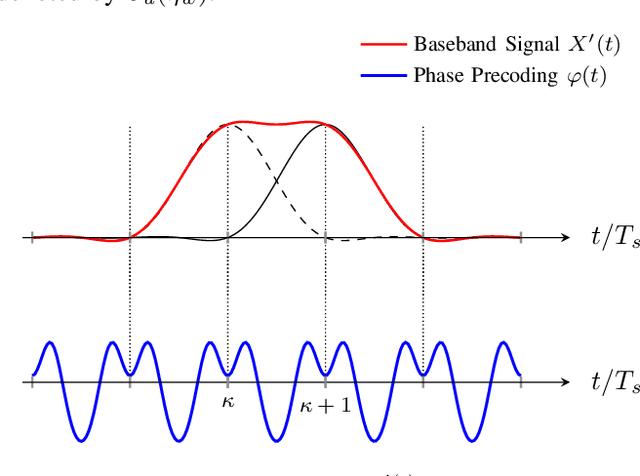
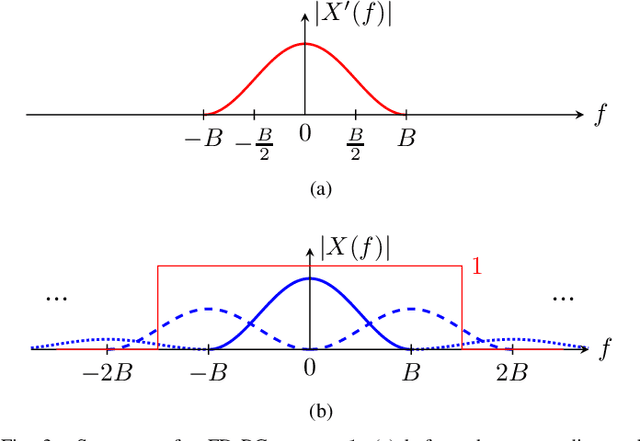

Abstract:Low-cost analog phase precoding is used to compensate chromatic dispersion (CD) in fibers with intensity modulation and direct detection (IM/DD). In contrast to conventional precoding with an in-phase and quadrature (IQ) Mach-Zehnder modulator (MZM), only a single additional phase modulator (PM) is required at the transmitter. Depending on the CD, the PM generates a periodic phase modulation that is modelled by a Fourier series and optimized via a mean squared error (MSE) cost criterion. Numerical results compare achievable information rates (AIRs) for 4- and 6-PAM. With the additional PM, energy gains of up to 3 dB are achieved for moderate fiber lengths.
Optimizing Bipolar Constellations for High-Rate Transmission in Short-Reach Fiber Links with Direct Detection
Jul 06, 2024Abstract:Bipolar modulation increases the achievable information rate of communication links with direct-detection receivers. This paper optimizes bipolar transmission with a modulator bias offset for short-reach fiber links. A neural network equalizer with successive interference cancellation is shown to gain over 100 Gbit/s compared to standard receivers.
Neural Network Equalizers and Successive Interference Cancellation for Bandlimited Channels with a Nonlinearity
Jan 17, 2024Abstract:Neural networks (NNs) inspired by the forward-backward algorithm (FBA) are used as equalizers for bandlimited channels with a memoryless nonlinearity. The NN-equalizers are combined with successive interference cancellation (SIC) to approach the information rates of joint detection and decoding (JDD) with considerably less complexity than JDD and other existing equalizers. Simulations for short-haul optical fiber links with square-law detection illustrate the gains of NNs as compared to the complexity-limited FBA and Gibbs sampling.
Comparison of PAM-6 Modulations for Short-Reach Fiber-Optic Links with Intensity Modulation and Direct Detection
May 11, 2022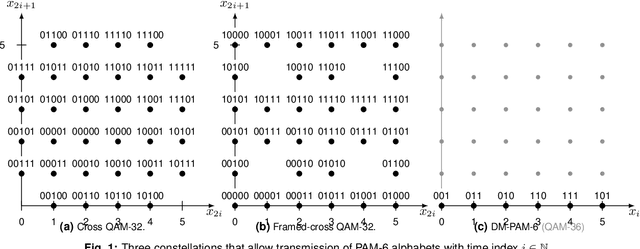

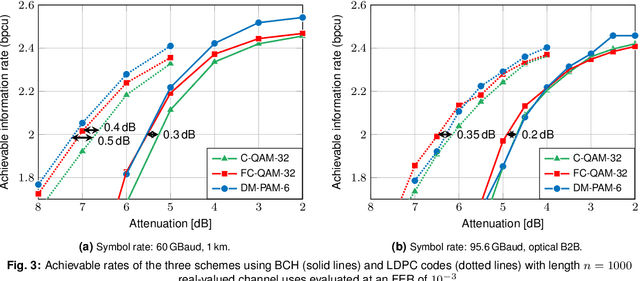
Abstract:PAM-6 transmission is considered for short-reach fiber-optic links with intensity modulation and direct detection. Experiments show that probabilistically-shaped PAM-6 and a framed-cross QAM-32 constellation outperform conventional cross QAM-32 under a peak power constraint.
Experiments on Bipolar Transmission with Direct Detection
May 11, 2022

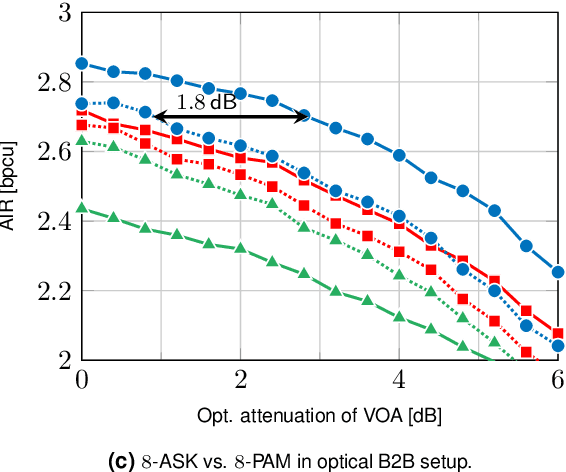
Abstract:Achievable information rates of bipolar 4- and 8-ary constellations are experimentally compared to those of intensity modulation (IM) when using an oversampled direct detection receiver. The bipolar constellations gain up to 1.8 dB over their IM counterparts.
Sparse Linear Precoders for Mitigating Nonlinearities in Massive MIMO
May 11, 2021



Abstract:Dealing with nonlinear effects of the radio-frequency(RF) chain is a key issue in the realization of very large-scale multi-antenna (MIMO) systems. Achieving the remarkable gains possible with massive MIMO requires that the signal processing algorithms systematically take into account these effects. Here, we present a computationally efficient linear precoding method satisfying the requirements for low peak-to-average power ratio (PAPR) and low-resolution D/A-converters (DACs). The method is based on a sparse regularization of the precoding matrix and offers advantages in terms of precoded signal PAPR as well as processing complexity. Through simulation, we find that the method substantially improves conventional linear precoders.
 Add to Chrome
Add to Chrome Add to Firefox
Add to Firefox Add to Edge
Add to Edge